How Data-Driven Engagement Drives EdTech Growth and Student Success?
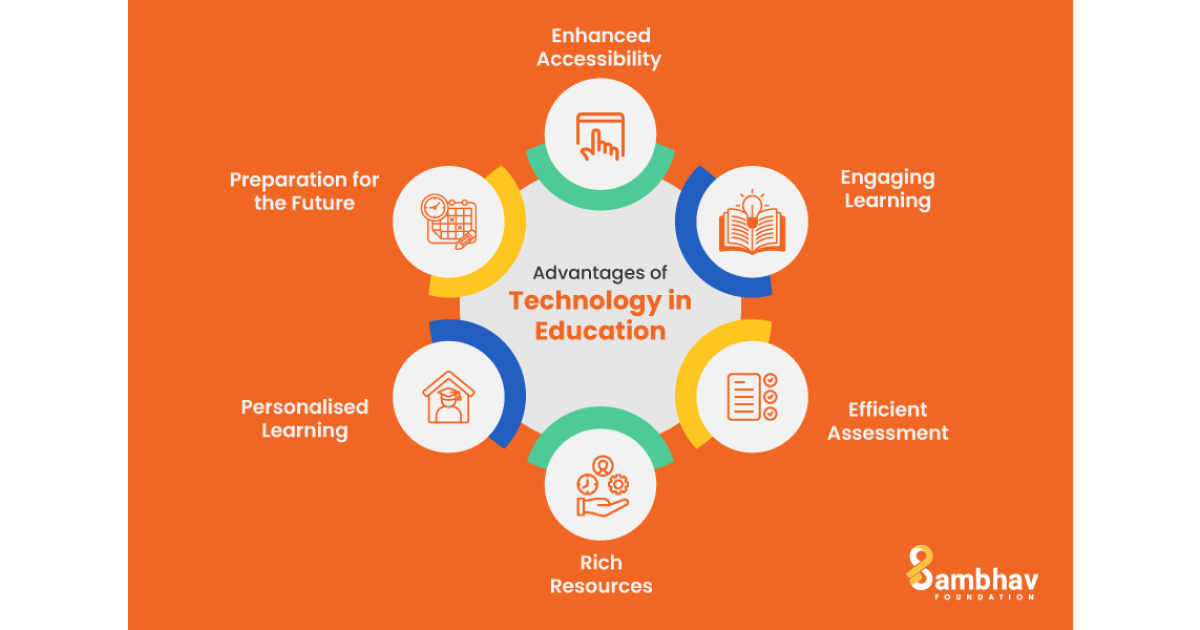
The global edtech sector is booming, expected to grow from $220.5 billion in 2023 to $810.3 billion by 2033 with a 13.9% CAGR. This surge highlights a critical need for edtech brands to build meaningful, data-led engagement strategies, especially with average student retention rates at just 27% and high dropout rates posing major challenges.
Here’s how data-led engagement through WebEngage’s Impact Stories™ is transforming the edtech landscape.
Use Case 1: How to Increase Course Attendance with Personalized Engagement?
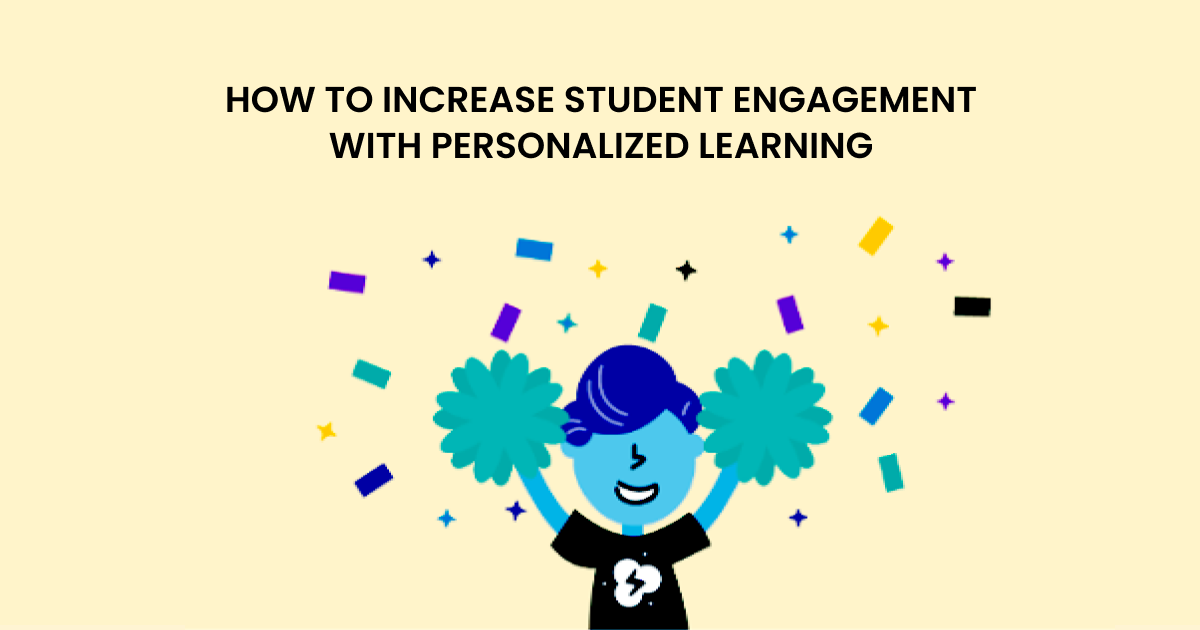
Why Course Attendance Matters
Student engagement is a major predictor of course completion, especially for non-traditional students who face additional barriers in online education. According to a study by Taylor and Francis on student engagement in higher education, first-year students in fields like computing had a 33.2% non-completion rate due to engagement barriers, highlighting the critical role of personalized support for retention.
Aakash Digital’s Success with WebEngage
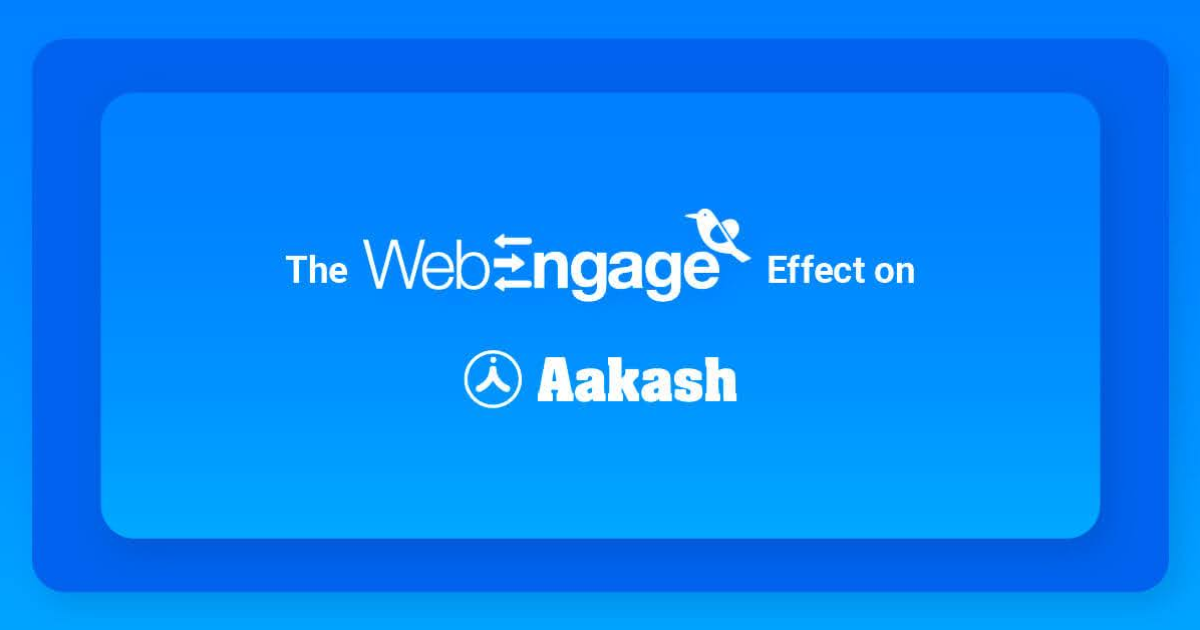
Aakash Digital, a premier online platform for competitive test preparation in India, leveraged WebEngage’s Retention Operating System to implement hyper-personalized engagement campaigns. By targeting students with action-based communication, Aakash Digital saw a 31% increase in LIVE class attendance and an 18% boost in recorded class views. This strategy proved vital in motivating students to attend sessions consistently and engage fully with the course material.
Key Metrics:
- 31% increase in live class attendance.
- 18% increase in recorded class views.
- 2.3X reduction in acquisition costs.
TutorBin’s Personalized Tutoring Ecosystem
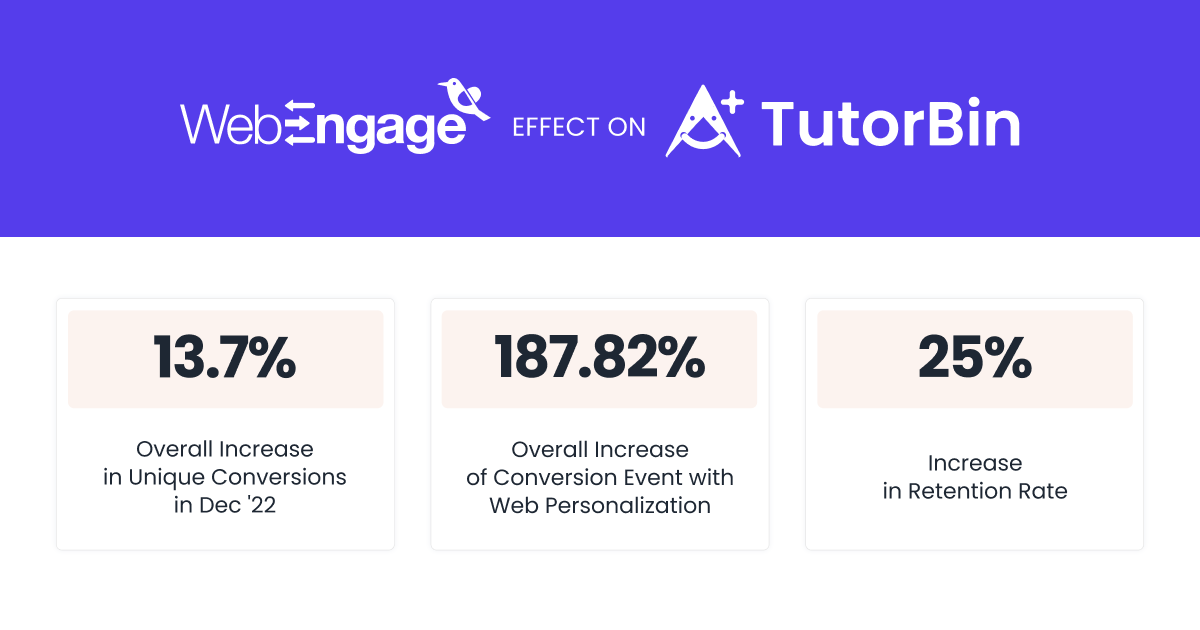
TutorBin, a global online tutoring platform, adopted WebEngage to personalize student experiences and improve retention. Using WebEngage’s segmentation and in-line web personalization, TutorBin achieved a 25% increase in student retention and saw conversions rise by 187.8% through web personalization. This personalized approach enables TutorBin to support students with targeted content and expert guidance, keeping them actively involved in their learning journey.
Key Metrics:
- 25% increase in user retention.
- 187.8% boost in unique conversion events.
Use Case 2: How to Convert Trial Users to Paid Subscribers?
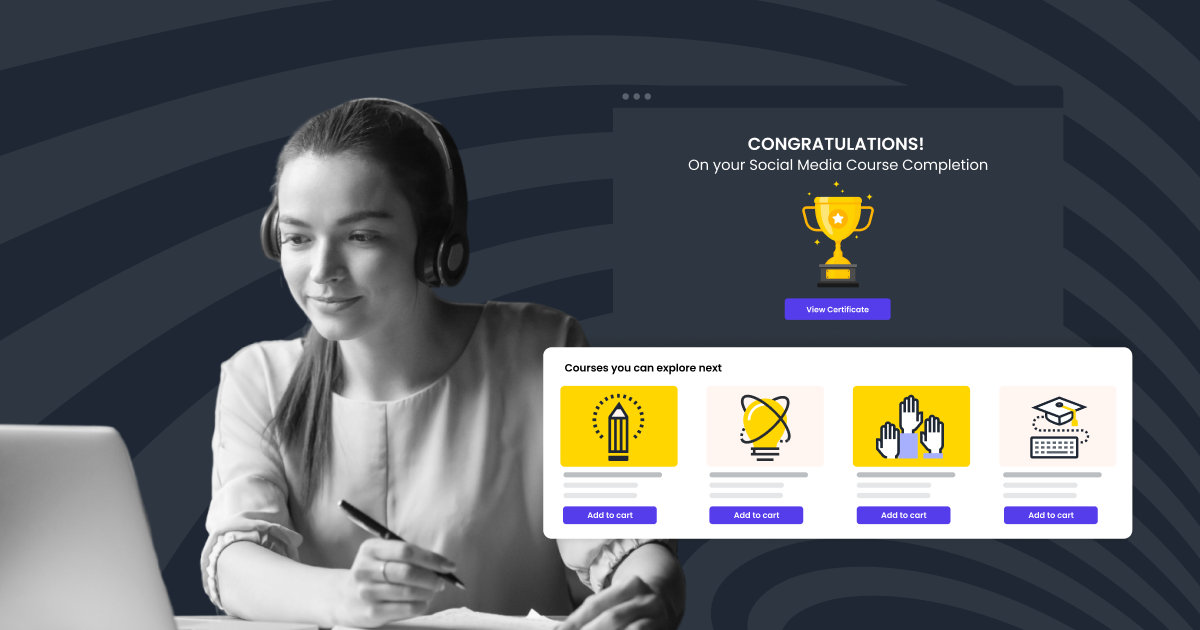
The Importance of Conversion in EdTech
With edtech’s average conversion rate at 2-3% (source), retaining and converting trial users into paying customers is a priority for edtech platforms. Personalized communication helps drive conversions, targeting each user’s unique needs and journey stage, which can double subscription rates.
Airblack’s Increase in Trial-to-Subscription Conversions
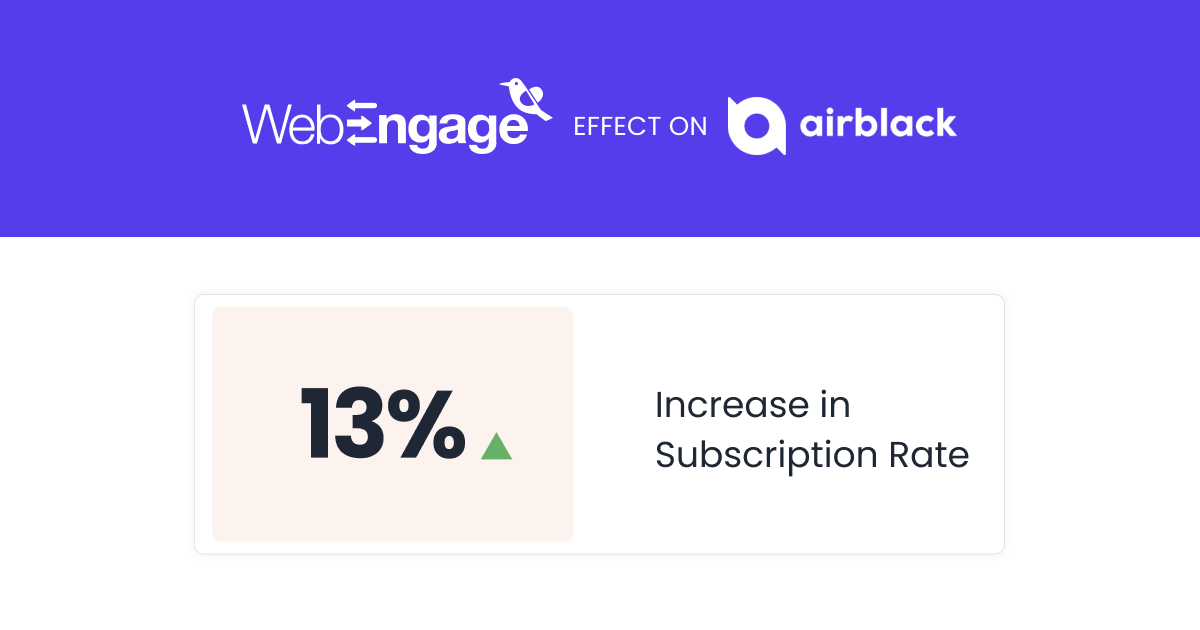
Airblack, a platform empowering micro-entrepreneurs in beauty and food, achieved a 13% increase in subscription rates by using WebEngage to send tailored emails and WhatsApp reminders to trial users. By leveraging customer behavior data to engage users at critical points, Airblack improved the relevance and timing of their outreach, resulting in higher conversions.
Key Metrics:
-
- 13% increase in trial-to-subscription conversion.
Testbook’s Success with Gamification
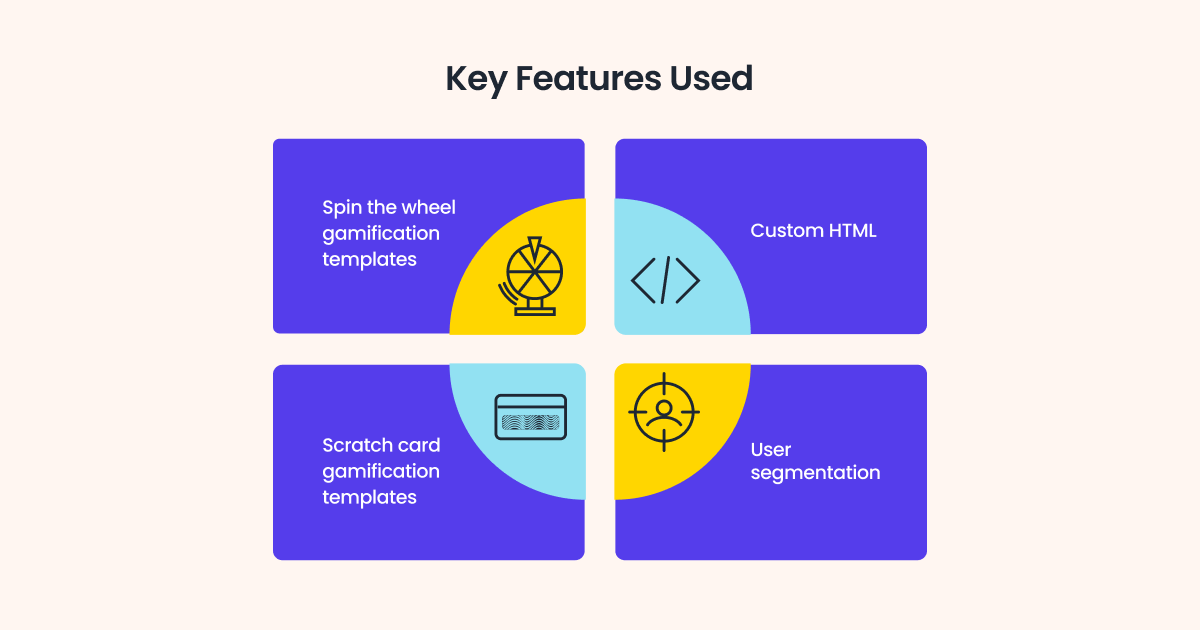
Testbook, a fast-growing edtech platform, saw revenue from in-app campaigns rise by 9X through gamified engagement strategies, including scratch cards and spin-the-wheel templates powered by WebEngage. This gamification approach encouraged users to upgrade to premium plans by making interactions fun, reinforcing the value of the paid experience.
Key Metrics:
-
- 9X increase in in-app campaign revenue.
- 3X increase in unique clicks on gamified campaigns.
Use Case 3: How to Improve Student Feedback and Engagement for Long-Term Retention?
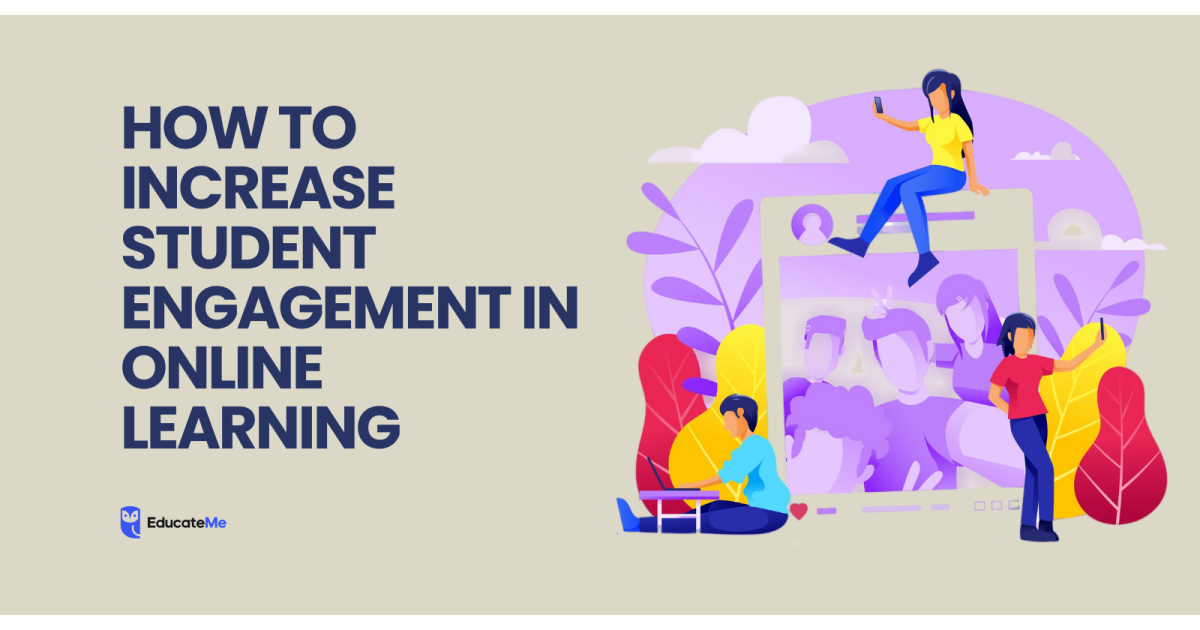
Retaining Students with Feedback-Driven EngagementEngagement and feedback play a crucial role in retention, especially for non-traditional students who need additional support structures. Retaining customers can cost up to 25 times less than acquiring new ones, and an effective retention strategy can convert 60-70% of existing customers compared to only 5-20% for new customers as per study by Hubspot.
Impact Story™: NxtWave’s 60% Feedback Response Rate
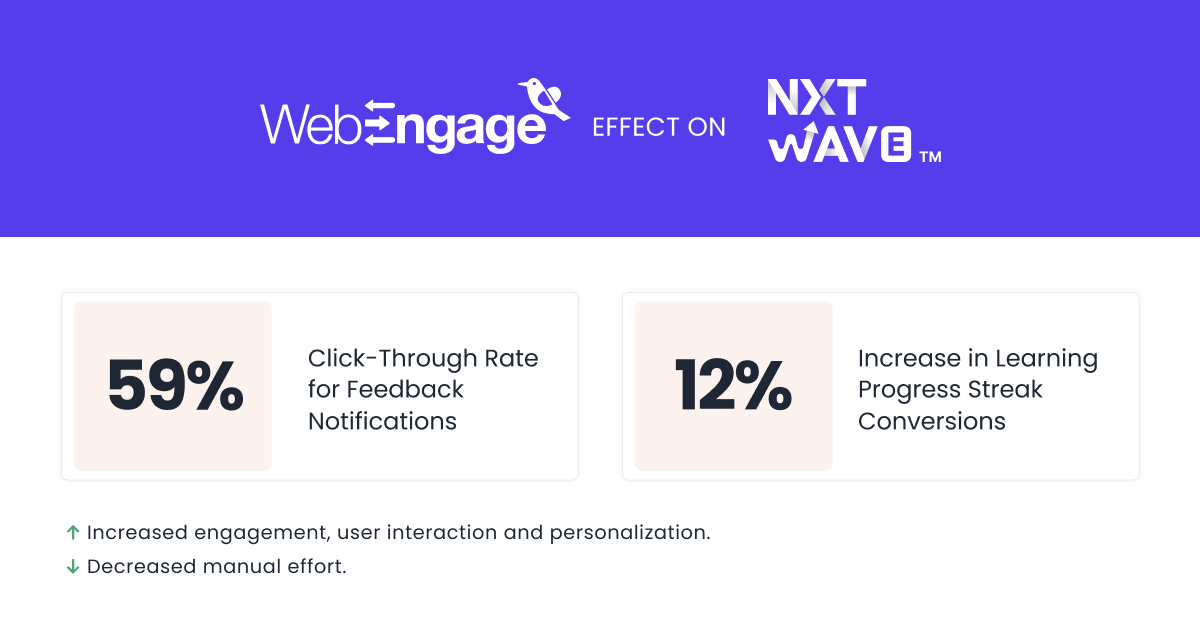
NxtWave, focused on skilling India’s youth for tech careers, leveraged WebEngage to automate feedback requests using on-site notifications, achieving a 59% click-through rate and a 60% feedback response rate. This feedback loop enabled NxtWave to continuously improve the student experience, ensuring students stay engaged and motivated.
Key Metrics:
- 60% feedback response rate
- 59% click-through rate for feedback notifications
Clapingo’s Revenue Boost through In-App Notifications
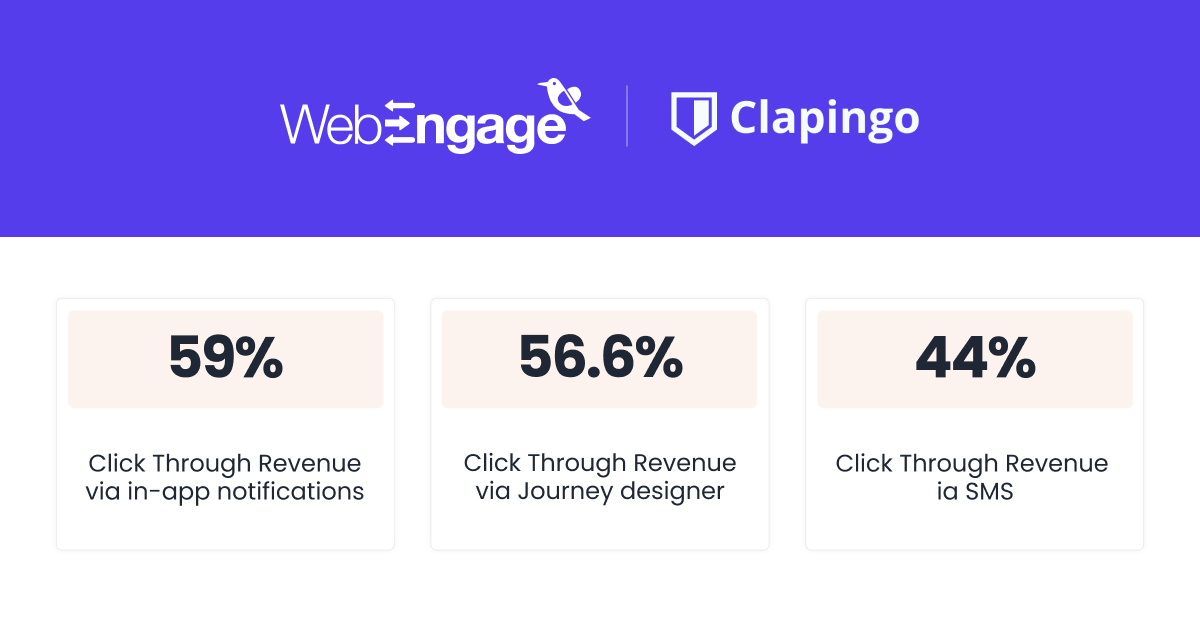
Clapingo, an online tutoring company, increased revenue by 59% via in-app notifications, using WebEngage’s multi-channel engagement tools to reach users across SMS, email, and push notifications. By strategically targeting users with reminders, Clapingo maximized trial conversions and encouraged re-engagement, ultimately driving higher click-through revenue.
Key Metrics:
- 59% revenue boost through in-app notifications.
- 44% increase in SMS click-through revenue.
Conclusion
In a highly competitive edtech landscape, engagement and retention are essential for long-term success. WebEngage equips edtech brands with advanced personalization, automation, and data-driven insights to address the key challenges of student retention, trial-to-paid conversion, and consistent engagement. With proven success stories from brands like Aakash Digital, TutorBin, and Testbook, WebEngage’s Retention Operating System is helping edtech platforms scale sustainably, foster student loyalty, and deliver exceptional educational experiences.
Call to Action:
Ready to see how WebEngage can transform your edtech engagement strategy? Explore the WebEngage platform and join the journey to enhance student success and retention. Book a Demo today.
FAQ Section
How does WebEngage improve student retention in edtech?
WebEngage uses personalized, data-driven campaigns across channels to keep students engaged and motivated.
What are the best channels for engaging students?
Effective channels include email, SMS, push notifications, and in-app notifications, all of which WebEngage optimizes for cross-channel campaigns.
How does WebEngage support data privacy for educational platforms?
WebEngage adheres to GDPR and other data privacy standards, ensuring secure handling of student information.
What is the average retention rate in edtech?
Industry data indicates a typical edtech retention rate of around 27%, which WebEngage helps improve through targeted engagement.
How can WebEngage’s gamification feature boost student engagement?
Gamification tools like scratch cards and spin-the-wheel templates make learning more interactive, encouraging students to stay involved.
What is WebEngage’s Retention Operating System?
It’s a suite of engagement tools that combine analytics, segmentation, and personalization to boost customer retention.
Does WebEngage support omnichannel marketing?
Yes, WebEngage enables cross-channel campaigns through email, push notifications, SMS, and more.
Can WebEngage improve trial-to-subscription conversions?
Absolutely, as shown with brands like Airblack, which increased conversions by 13% using WebEngage’s targeted campaigns.
What is WebEngage’s Customer Data Platform (CDP)?
The CDP centralizes user data to create unified customer profiles, enabling precise targeting and personalized campaigns.
Why is retention important for edtech brands?
Retention reduces churn, builds student loyalty, and ensures a sustainable revenue stream, making it a critical success factor.







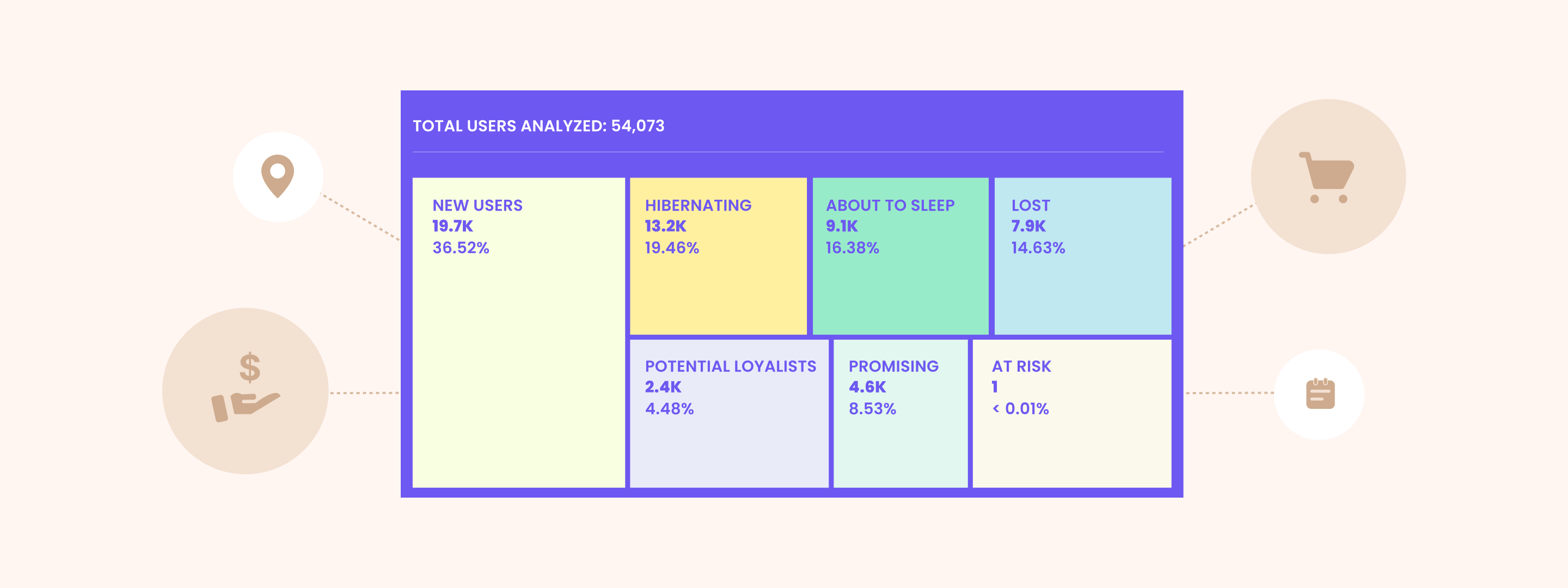
 Harshita Lal
Harshita Lal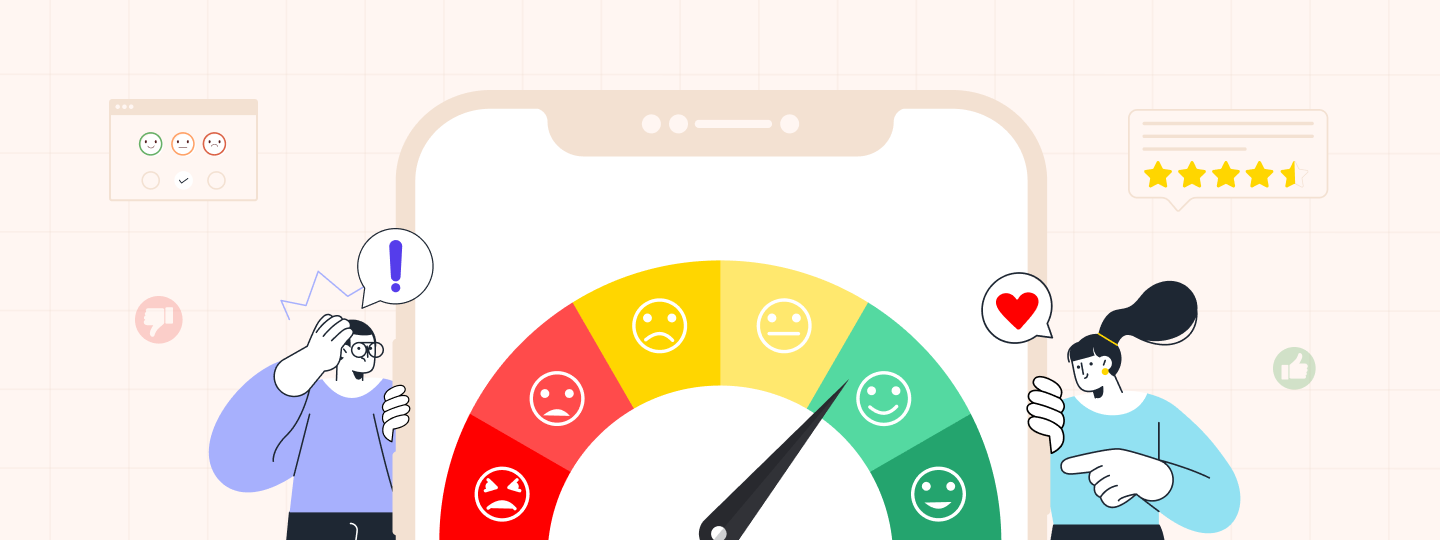
 Sanjay Mishra
Sanjay Mishra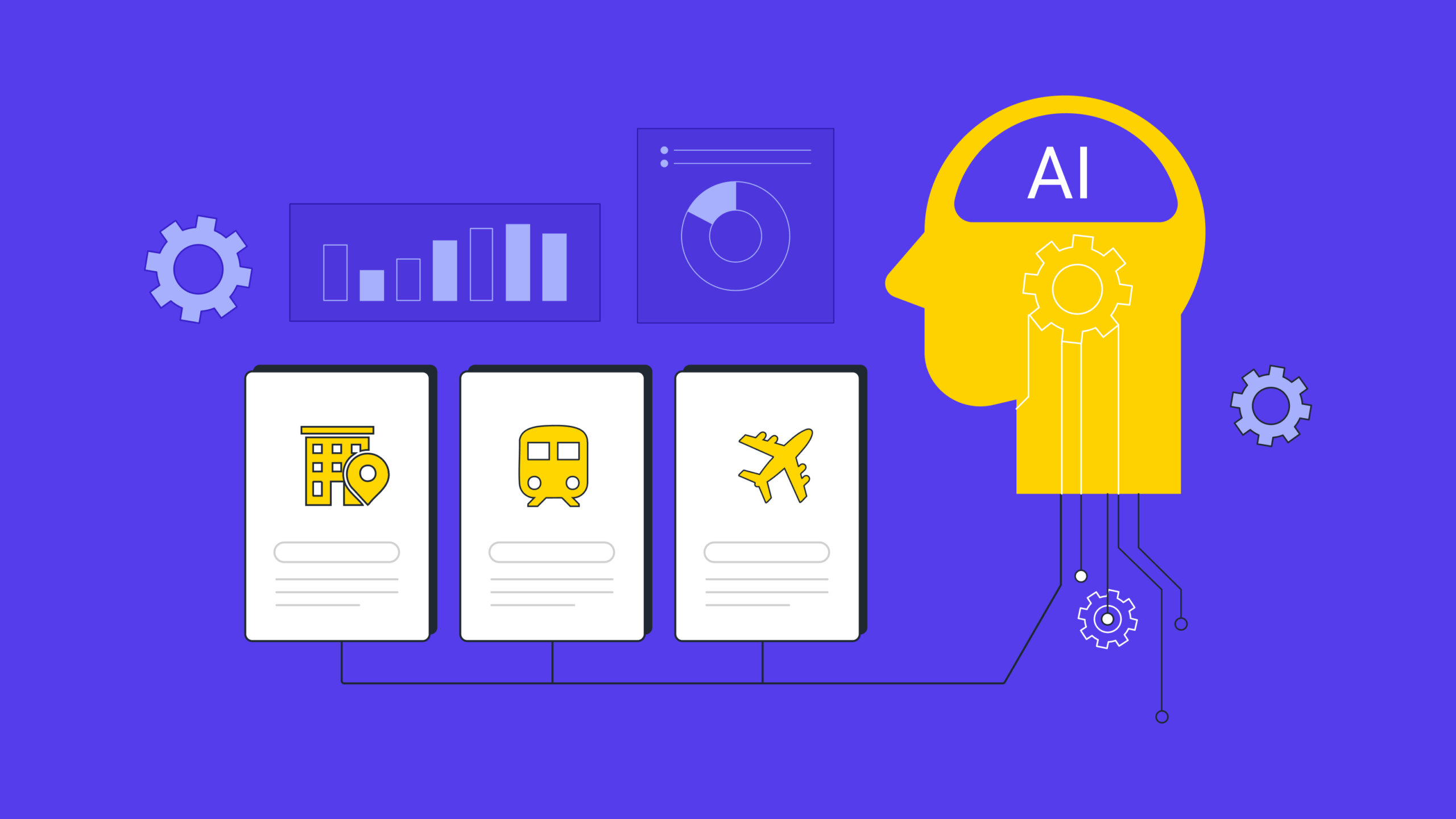
 Prakhya Nair
Prakhya Nair